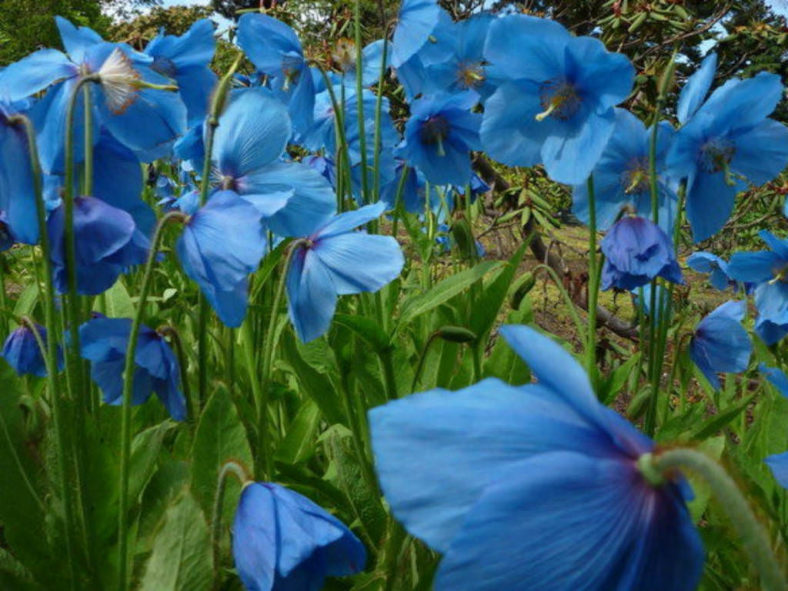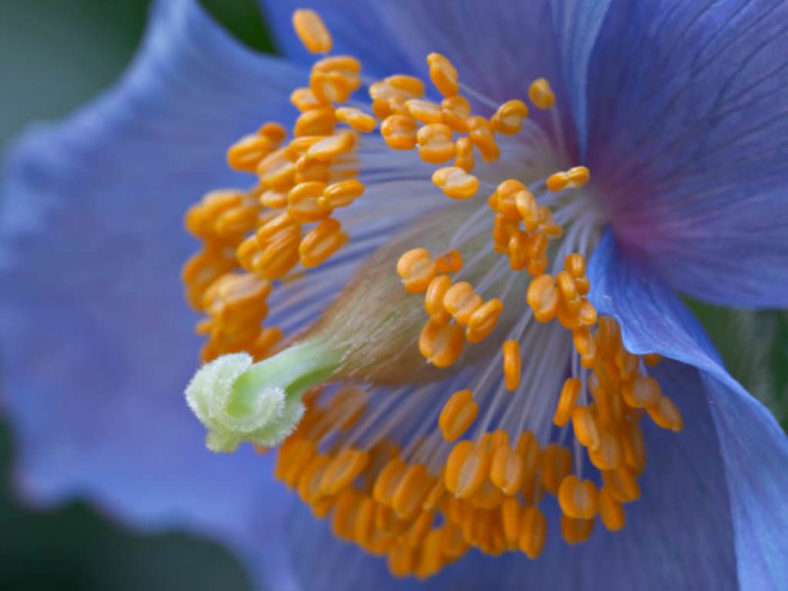Scientific Name
Meconopsis betonicifolia Franch.
Common Name(s)
Himalayan Poppy, Himalayan Blue Poppy, Bailey's Blue Poppy, Blue Poppy, Tibetan Poppy, Tibetan Blue Poppy
Synonym(s)
Meconopsis baileyi
Scientific Classification
Family: Papaveraceae
Subfamily: Papaveroideae
Tribe: Papavereae
Genus: Meconopsis
Origin
Meconopsis betonicifolia is native to China.
Flower
Color: Blue
Bloom Time: Late spring to early summer
Description
Meconopsis betonicifolia is a short-lived, often monocarpic perennial with a rosette of hairy blue-green oblong leaves. It grows up to 4 feet (1.2 m) tall.
The large flowers are deep blue with contrasting yellow stamens and up to 4 inches (10 cm) across.

How to Grow and Care
Full sunlight (cool areas only); full or partial shade. Acidic soil. Add grit to heavy soils. Nutrient-rich soil, add manure, leaf matter, or compost if necessary. Moist soil. Supply mulch of manure or bark chippings when planting to help maintain moisture; do not cover the crowns. Regular watering during dry periods in summer to keep the soil moist. No need to water in the winter as the plant prefers dry soil while resting. Cut back to the ground in autumn. Replace regularly as Meconopsis do not live for a long time.
When growing Meconopsis plants in the garden, it is very important to keep the soil moist in the summer. Once the growing period has finished, cut back Meconopsis plants to ground level (autumn). If you require more plants, they can be propagated by division at the start of spring.
The Meconopsis seeds should be sown on the surface; this can either be done just before the last frost of spring or towards the end of autumn. Blue Poppies prefer to grow in a shady or partially shady part of the gardens but can tolerate sunny areas in milder climates. They like rich, acidic soil. Ideally, the soil should be kept moist in the summer but allowed to dry in the winter.
See more at How to Grow and Care for Meconopsis.
Links
- Back to genus Meconopsis
- Plantpedia: Browse flowering plants by Scientific Name, Common Name, Genus, Family, USDA Hardiness Zone, or Origin
Photo Gallery
Click on a photo to see a larger version.




